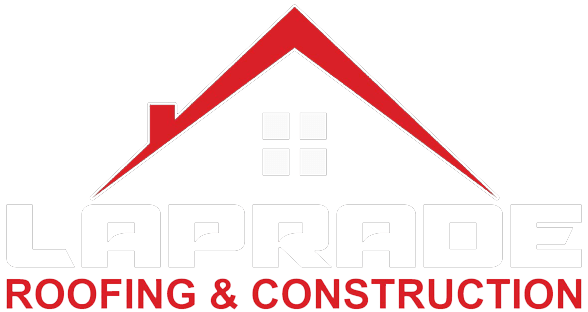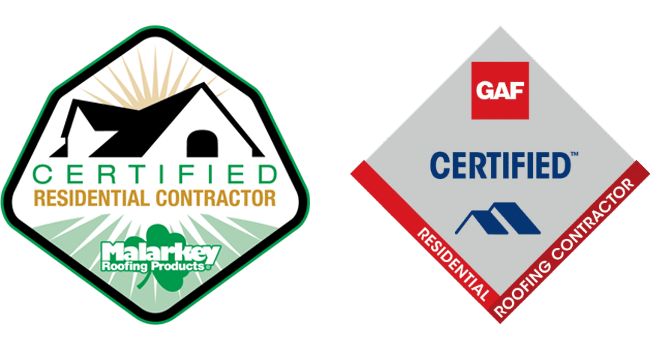Commercial Roofing Replacement
Commercial roofing systems face unique challenges that residential properties rarely encounter. The sheer scale of these structures, combined with constant exposure to weather elements and mechanical equipment stress, means that even the most durable commercial roofs eventually require replacement. At LaPrade Roofing & Construction, we’ve observed that most commercial roofing systems begin showing significant wear after 15-20 years, though this timeline varies dramatically based on material type, installation quality, and maintenance history.
The decision to replace a commercial roof involves careful evaluation of multiple factors beyond simple age. Water infiltration remains the primary indicator, but we also assess membrane deterioration, insulation compression, and structural deck integrity. Our crew has lived in the area for over 15 years, so we stand by our workmanship and will make things right if needed. This local experience has taught us that Spearfish, SD, and the surrounding areas weather patterns create specific challenges for commercial roofing systems, particularly during seasonal transitions when temperature fluctuations stress roofing materials most severely.
Commercial Roofing Materials and Their Replacement Considerations
Modern commercial roofing encompasses several material categories, each with distinct replacement timelines and procedures. TPO (Thermoplastic Polyolefin) membranes, currently dominating approximately 40% of the commercial roofing market, typically require replacement after 20-30 years. These single-ply systems offer excellent energy efficiency through their reflective white surfaces, reducing cooling costs by up to 30% compared to traditional built-up roofing.
EPDM (Ethylene Propylene Diene Monomer) rubber roofing, recognizable by its black appearance, serves countless warehouses and industrial facilities throughout Spearfish, Belle Fourche, Sturgis, Deadwood, Lead, and Rapid City, SD. While EPDM systems can last 25-35 years with proper maintenance, we often encounter premature failures due to seam separation and punctures from rooftop traffic. Modified bitumen systems, combining traditional asphalt with modern polymers, provide robust protection for 20-25 years but require careful replacement planning due to their multi-layer construction.
The Commercial Roof Replacement Process
Executing a commercial roof replacement demands meticulous planning and coordination. We ensure our customers are supported through the whole roofing process and provided with transparent communication through all steps. The initial phase involves comprehensive roof assessment using infrared moisture scanning, core sampling, and structural load analysis. These diagnostic tools reveal hidden damage patterns that visual inspection alone cannot detect.
Once assessment completes, we develop detailed project specifications addressing:
- Material selection based on building use and energy goals
- Drainage improvements to eliminate ponding water
- Insulation upgrades meeting current energy codes
- Integration with existing HVAC and mechanical systems
- Safety protocols protecting building occupants during construction
Minimizing Business Disruption During Replacement
Commercial roof replacement projects must balance thoroughness with operational continuity. We understand that businesses cannot simply shut down for weeks while roofing work proceeds. Our approach involves strategic phasing, where we replace sections systematically while maintaining weather protection over active work areas. This methodology has proven especially effective for retail environments, manufacturing facilities, and office complexes where daily operations generate revenue.
Noise management represents another critical consideration. Modern commercial roofing installation generates significant sound levels, particularly during tear-off phases. We coordinate with facility managers to schedule the loudest activities during off-peak hours or weekends. Additionally, we employ specialized equipment with reduced noise signatures when working above occupied spaces. “Satisfaction. Every Shingle Time.” means respecting both the building and its occupants throughout the replacement process.
Technology Integration in Modern Commercial Roofing
Today’s commercial roof replacements incorporate advanced technologies that extend system longevity and improve performance monitoring. We regularly install moisture detection systems that provide real-time alerts when water infiltration occurs, enabling rapid response before extensive roof damage develops. These smart roofing systems can reduce maintenance costs by 25-40% over traditional reactive maintenance approaches.
Energy efficiency improvements during replacement offer substantial long-term savings. Cool roofing materials, meeting ENERGY STAR specifications, reflect up to 85% of solar radiation compared to 20% for traditional dark roofing. Combined with enhanced insulation packages, these systems can reduce building cooling loads by 10-15%, translating to thousands of dollars in annual energy savings for larger commercial structures.
Investment Protection Through Professional Installation
Commercial roof replacement represents a significant capital investment, often ranging from $5-12 per square foot depending on system complexity and material selection. We are also backed up by GAF being a certified contractor so we will have the backing and resources from the largest shingle manufacturer in the United States. This certification ensures access to premium commercial roofing systems and extended warranty options that protect your investment for decades.
Professional installation directly impacts system longevity and performance. Industry studies indicate that improper installation causes approximately 40% of premature commercial roof failures. Our systematic approach addresses critical details like proper fastener patterns, membrane welding temperatures, and flashing integration that determine long-term success. When we complete a commercial roof replacement, we provide comprehensive documentation including warranty information, maintenance schedules, and as-built drawings for future reference.

